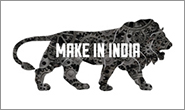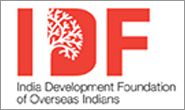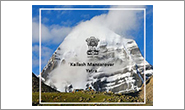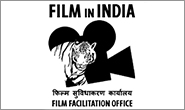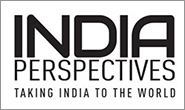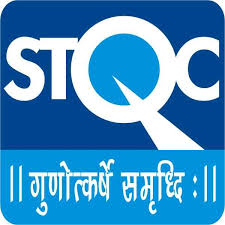Ambassadors interview to Beijing Review
02/02/2015
Beijing Review: It has been almost a year since Prime Minister Narendra Modi won the general election last year. What changes are expected to unfold in China-India relations, in terms of economic and people-to-people exchanges?
Ashok K. Kantha: The new government conveyed clearly that it attached the highest priority to developing relations with China in an all-round manner. The Chinese Government also reached out, and as a result, we have made tangible gains in bilateral relations.
The year 2014 was marked by visits in both directions by the highest leadership. Our vice president visited China barely a month after Prime Minister Modi's government was sworn in. President Xi Jinping made a successful state visit to India in September 2014, which was a high watermark for our engagement and took our exchanges to a new trajectory of cooperation. The visit was also characterized by an exceptional display of camaraderie between the leaders of our two countries. Our prime minister has met President Xi thrice and Premier Li Keqiang once in the eight months since taking office.
During the visit of President Xi to India, the Chinese side expressed its readiness to realize an investment of $20 billion in India in the next five years in various industrial and infrastructure development projects. Two MOUs were signed for setting up of industrial parks in the states of Maharashtra and Gujarat with focus on automobile and power equipment sectors. We have agreed on an action plan for cooperation in the railway sector, which includes speed-raising along existing tracks, feasibility study on high-speed rail link, heavy-haul transportation training of Indian railway personnel, redevelopment of railway stations, and the setting up of a Railway University in India.
Our bilateral trade crossed $70 billion last year, though our growing trade deficit with China is a matter of concern. Prime Minister Modi has invited Chinese companies to take advantage of vast emerging opportunities in our economy, especially in manufacturing and infrastructure segments. Our vigorous efforts to involve China as an important partner in the Make-in-India campaign are yielding positive response.
Both countries are working together to enhance exchanges in the defense field right from the headquarters to the level of the border commanders. We successfully concluded the Hand-in-Hand joint counterterrorism exercises last November.
People-to-people contacts are making notable progress. We have had vibrant cultural exchanges in 2014, with the Indian Embassy organizing the Glimpses of India Festival in 14 Chinese cities which received excellent response from the public. During the visit of President Xi to India, the leaders of our two countries agreed to launch an India-China Cultural Exchange initiative.
India and China are closely cooperating with each other in the regional, multilateral and international context. The decision to establish the BRICS-led New Development Bank is just one example. India has also joined the Chinese initiative on the Asian Infrastructure Investment Bank.
Looking ahead, this year is the 65th anniversary of the establishment of diplomatic relations between India and China. We have several important engagements lined up, including the visit to China of our minister of external affairs shortly and of our prime minister later in the year.
Further, we are going to jointly celebrate the Visit-India Year in China in 2015 and the Visit-China Year in India in 2016. I am also confident that the second meeting of the China-India Media Forum in Beijing early in February will enhance our mutual understanding.
At the Vibrant Gujarat Summit held this January, business leaders seem to be counting on Prime Minister Modi to unleash big reforms and create a rare bright spot in the troubled world economy. What is India's role in shifting global economic gears?
The new government has been elected on a strong development plank and economic liberalization has received top priority by policymakers. India's GDP expanded by 5.5 percent in the first half of 2014, and most analysts expect this to go up in the next two years. In fact, the World Bank and the IMF have recently forecast India to be the world's fastest growing large economy after a couple of years. There is a big positive change in investor outlook, and this along with the economic reforms agenda currently under implementation would enable India to accelerate growth.
Speaking at the Vibrant Gujarat Summit earlier in January, the prime minister outlined many initiatives already taken by his government. He referred in particular to the financial inclusion program which in just four months has led to the opening of more than 100 million bank accounts; the Smart City program to equip 100 cities with world-class amenities; setting up of a modern railway system including high speed rail link; the opening up of the defense sector for private sector including overseas players; FDI in insurance; efforts to improve the business climate and facilitate "ease of doing business;" allocation of key natural resources; legal provisions to facilitate availability of land; ensuring predictability of the tax regime; and focus on building infrastructure through public and private investments as well as port-led development.
Additionally, the government has rolled out several landmark initiatives that not only address gaps in India's development but also lay the foundation for attracting investments, including from China. These initiatives include the Make-in-India campaign to boost manufacturing growth and create employment, the Clean India mission to improve sanitation and waste management, Digital India to connect each village in India with fiber-optic network and bring public services online, and Clean Energy program to build 100 gigwatts of solar energy and 60 gigawatts of wind energy.
The government of India has resolved to transform India into a globally competitive manufacturing hub powered by skill, scale and speed. To this end, efforts are underway to set up world class investment and industrial regions, particularly along the Dedicated Freight Corridors and Industrial Corridors spanning the country. We have invited Chinese companies to participate in these projects.
What are China and India's biggest problems in terms of their bilateral relationship? What approach will Prime Minister Modi take to seek solutions to these problems?
The issues in the relationship are fairly well known. As a basic principle, I can state that both sides must be sensitive to each other's concerns and aspirations. Prime Minister Modi has articulated his keenness to work closely with the Chinese leadership to deal with any outstanding issues in our bilateral relations by proceeding from the strategic perspective of our developmental goals and long-term benefits to our peoples.
India and China agree that an early settlement of the boundary question is a strategic objective. We must shed this baggage as early as possible. The resolution of this outstanding issue will generate mutual trust, give a big boost to our bilateral relations and help us realize the full potential of our strategic partnership. We also recognize that pending a boundary settlement, peace and tranquility along the borders is an essential prerequisite for the continued growth and expansion of bilateral ties. The resumption of the LAC (Line of Actual Control) clarification process will be helpful.
As the regional footprints of the two countries increasingly overlap, we must develop the habit of closer consultations and accommodation of each other's sensitivities. We must constantly explore the areas of cooperation and convergence.
The burgeoning trade deficit is a matter of concern. Chinese leaders, including President Xi and Premier Li, have themselves characterized the trade gap to be "unsustainable." We agree entirely and are willing to work with the Chinese side on areas such as market access, especially for sectors of Indian strength such as pharmaceuticals, automobiles and textiles, regulatory bottlenecks, enhanced two-way investment flows to broad-base our economic engagement, and so on.
Some Western media reports suggest that Prime Minister Modi intend to contain China's influence in the region. What's your take on this view? Do you see China as a rival or a friend for India?
We do not believe that countries like China and India can be contained. We do not see China as a rival or adversary. In fact, we admire China and its industrious people for their remarkable achievements. Prime Minister Modi has on more than one occasion told President Xi that India and China are "two bodies with one spirit."
During President Xi's visit to India, our leaders asserted that the India-China developmental partnership is conducive not only to the common interests of both sides, but also to the stability and prosperity of the region and the world. The joint statement issued during the visit stressed that the current priority in the Asia-Pacific space is to maintain peace and stability of the region, promote common development, and establish an open, transparent and inclusive framework of security and cooperation based on the observance of the basic principles of international law.
I am of the firm view that India and China have enormous opportunities to not only forge mutually beneficial partnerships, but also serve as catalytic agents of Asian and global prosperity. This is a key aspect of our strategic and cooperative partnership for peace and prosperity.



















